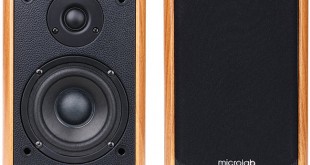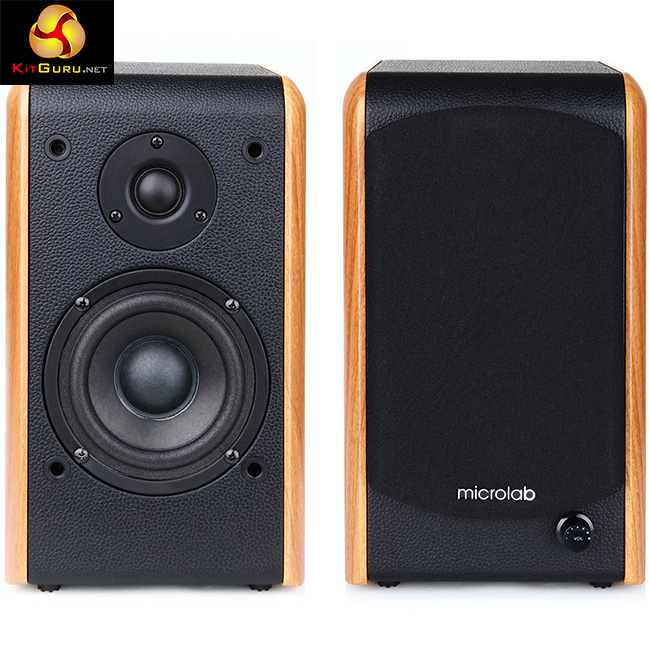
Microlab is back with a new line of speaker systems for 2015. Today we are taking a look at the B-77 bookshelf stereo speakers, making them a bit smaller and more suited for desk use than the giant Solo 8C speakers we reviewed last year.

Microlab impressed us greatly last year with the Solo 8C’s, walking away with a ‘MUST HAVE’ award. Will the B-77 speakers be equally impressive? Let’s find out…
Features and Specifications:
- Bookshelf design.
- Wood cabinet for warm tones.
- Bass reflex tunnel for deeper bass.
- Master volume, treble and bass controls.
- Terminal speaker connection.
- Output power: 48 Watt RMS.
- Power distribution: (14+10)x2 Watt.
- Frequency response: 55-20,000 Hz.
- Signal/Noise ratio: 70dB.
 KitGuru KitGuru.net – Tech News | Hardware News | Hardware Reviews | IOS | Mobile | Gaming | Graphics Cards
KitGuru KitGuru.net – Tech News | Hardware News | Hardware Reviews | IOS | Mobile | Gaming | Graphics Cards



Hi Matthew, currently I have this model and I have idea speakers replace for Presonus studio monitors Eris 4.5 “, but seeing this good Revison you would like to know if it will be worth the change, I will gain in audio quality? In my country Presonus monitors costing three times more than Microlab b77. I would appreciate your expert opinion.
Sound card asus xonar DX + Microlab B77 + Subwoofer Yamaha SW-011 -8”
Hi Matthew, currently I have this model Microlab and I have idea speakers replace for Presonus studio monitors Eris 4.5 “, but seeing this good Revison you would like to know if it will be worth the change ? I will gain in audio quality? In my country Presonus monitors costing three times more than Microlab b77. I would appreciate your expert opinion.
Sound card asus xonar DX + Microlab B77 + Subwoofer Yamaha SW-011 -8”
Thanks !
Can I connect a small subwoofer to the B77 in order to increment the bass?
Maybe if you split the input with a y-connector.